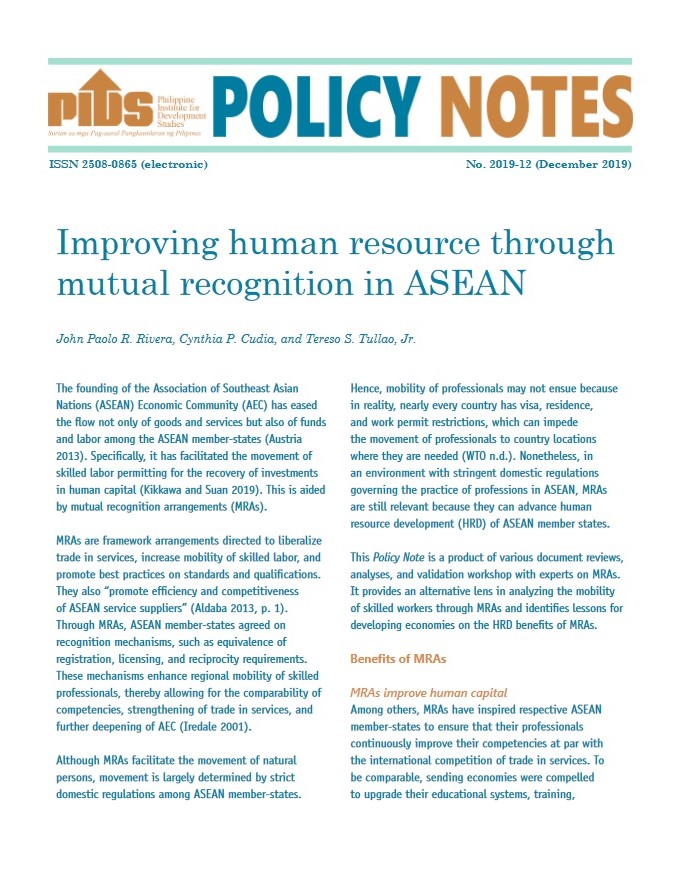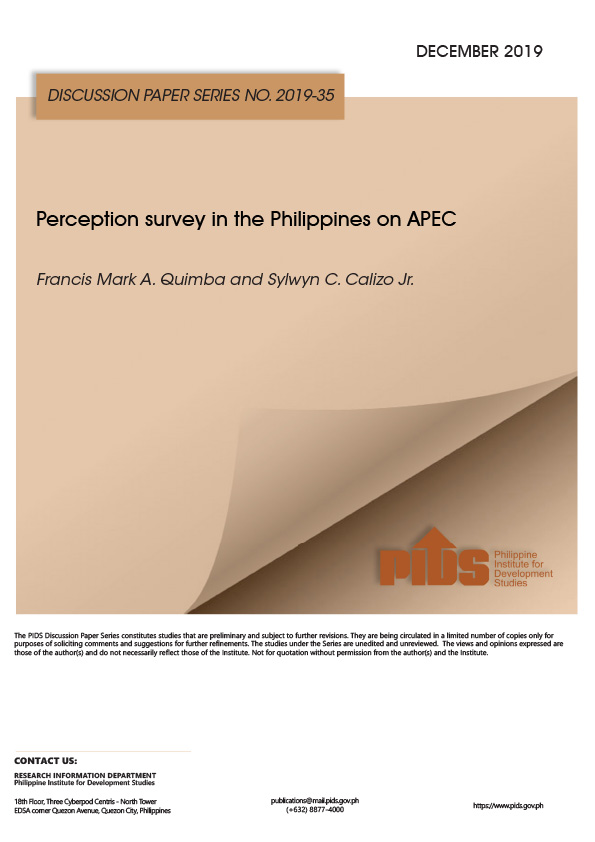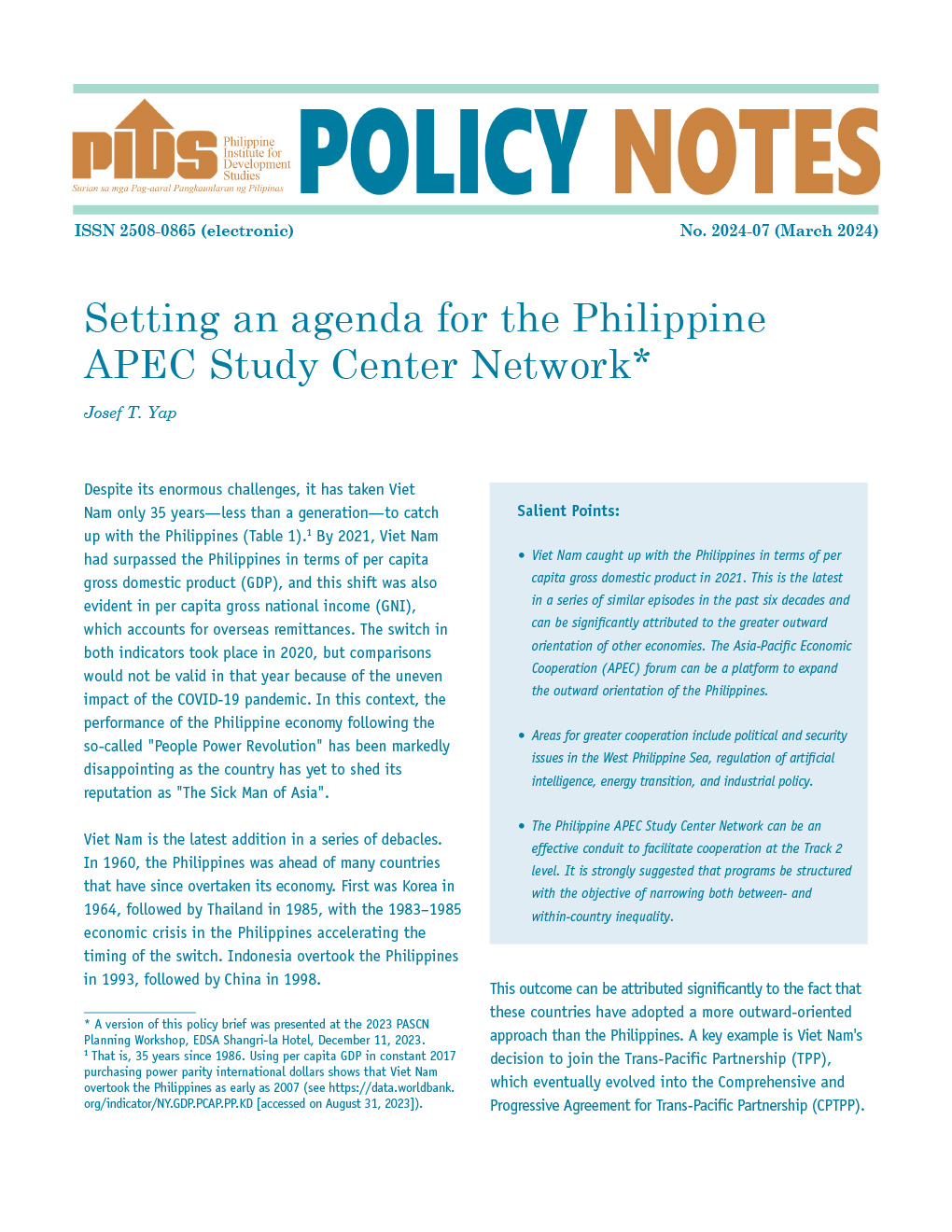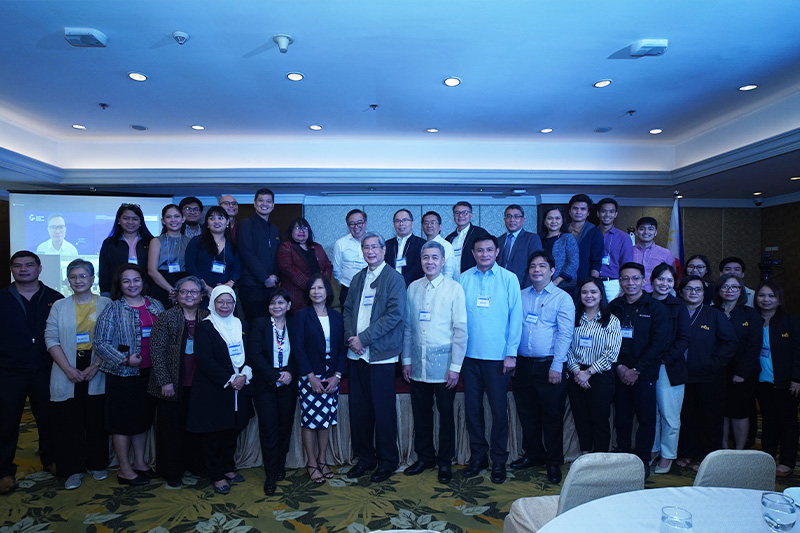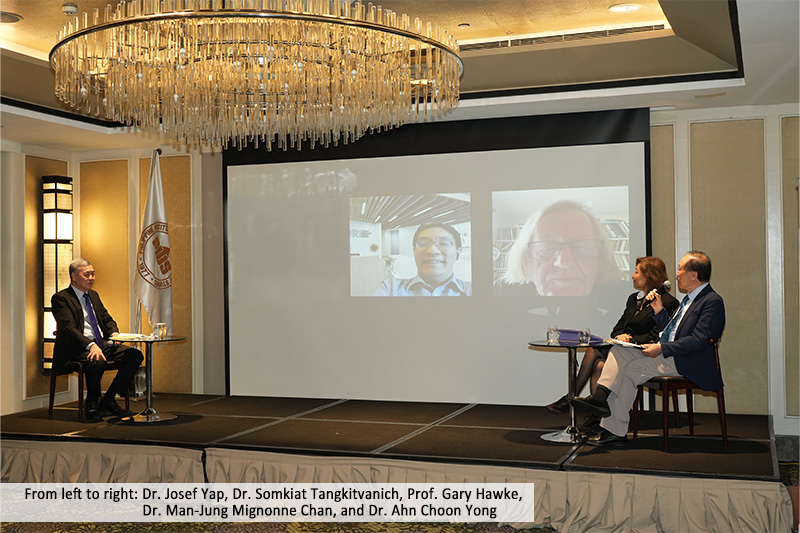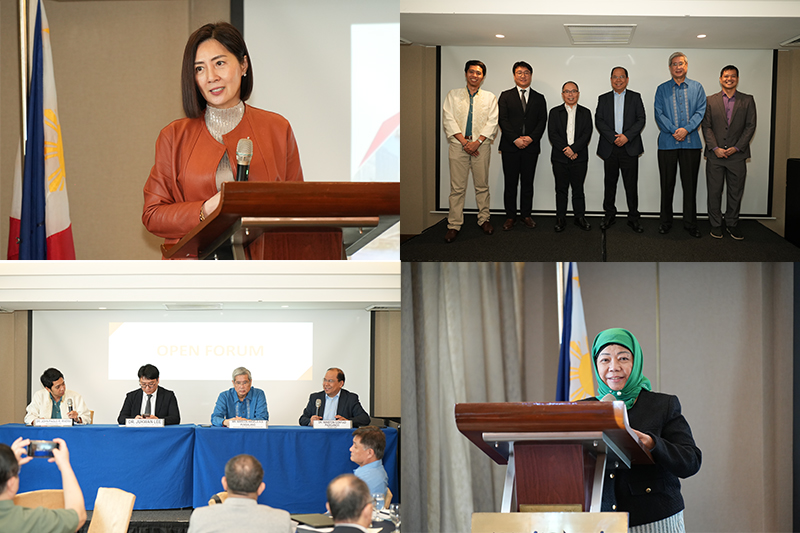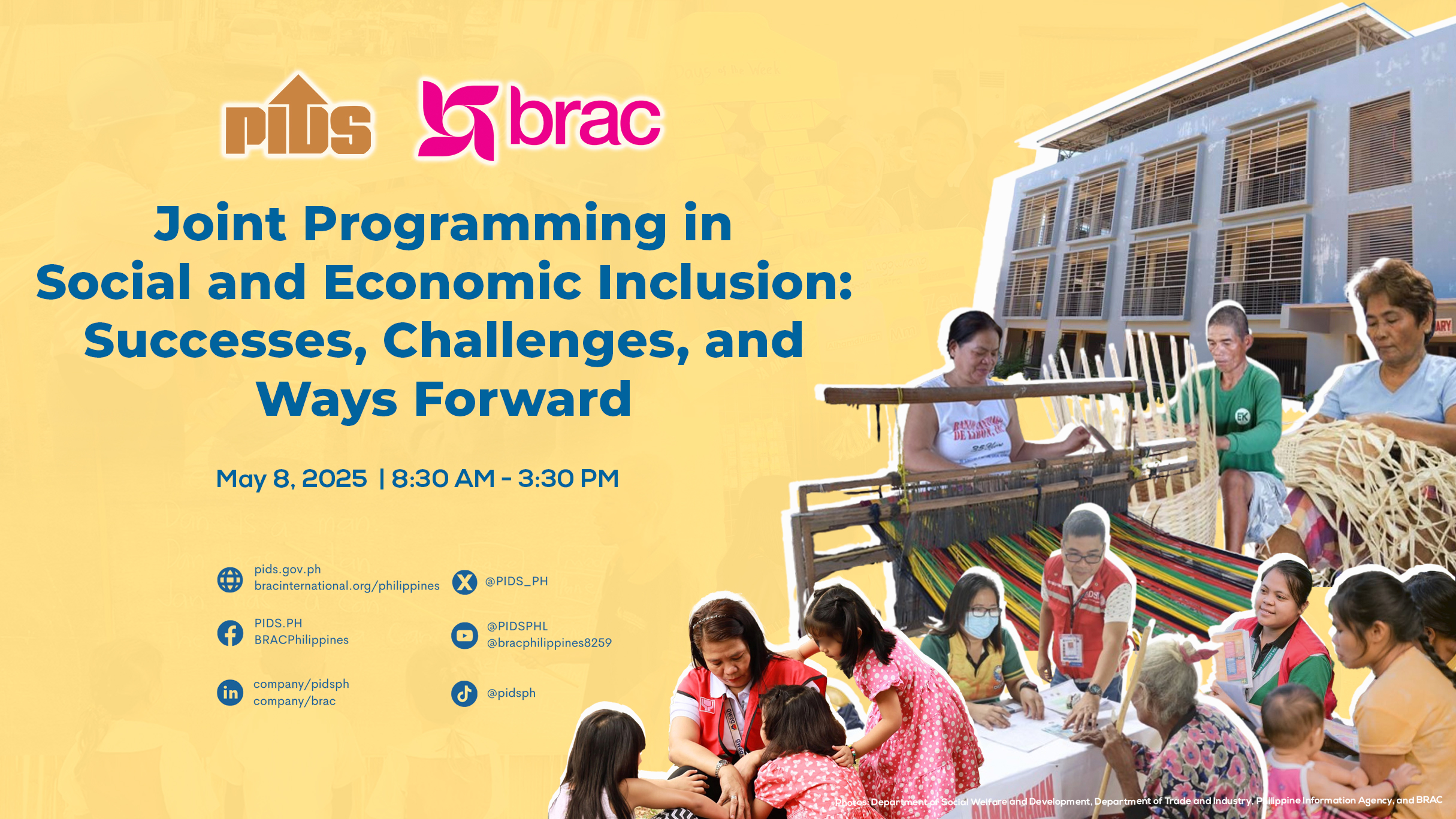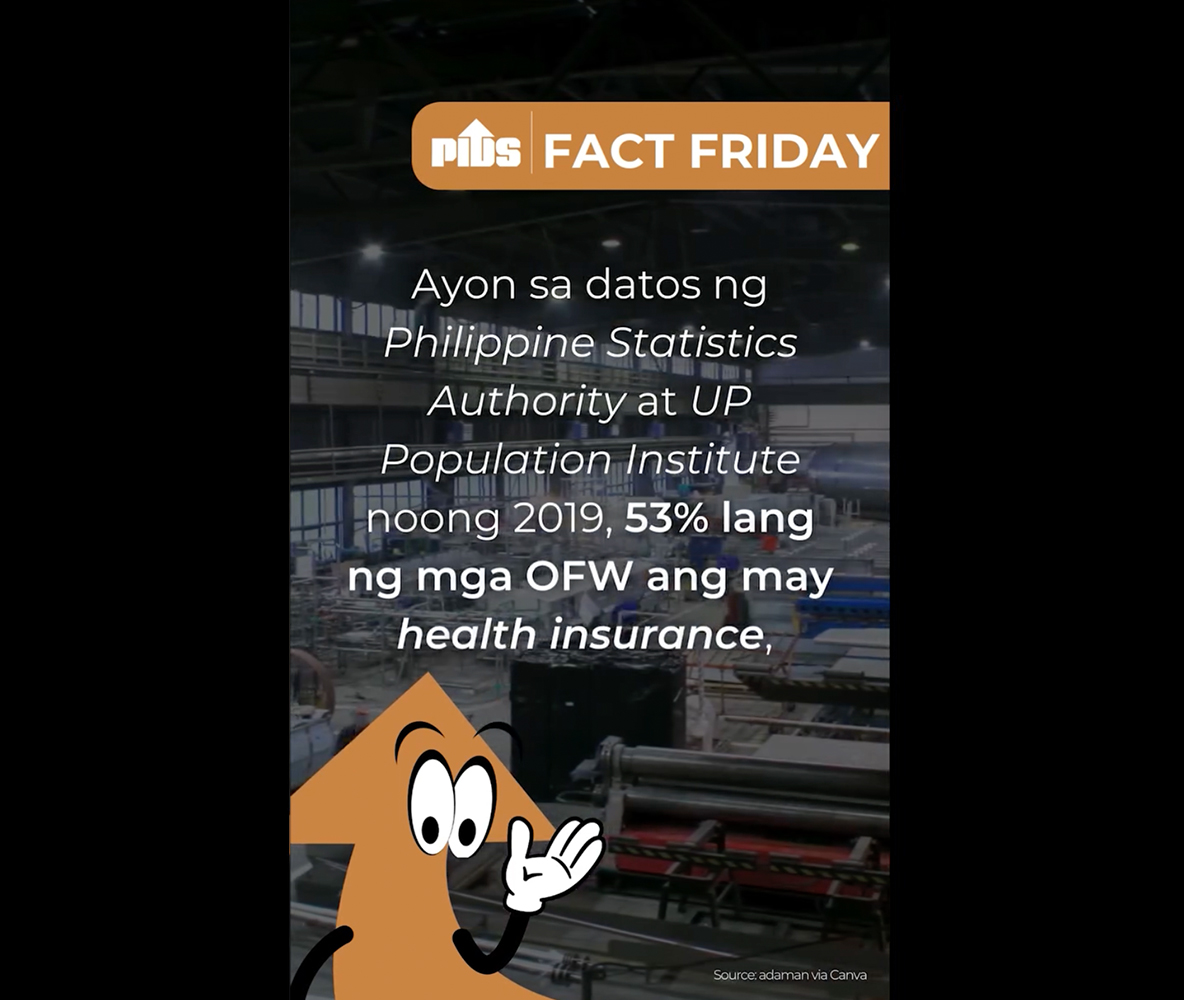MANILA, Sept. 21 – To enhance understanding of the economic pillar of the Association of Southeast Asian Nations (ASEAN), state think tank Philippine Institute for Development Studies (PIDS) and Jakarta-based Economic Research Institute for ASEAN and East Asia (ERIA) held a public symposium on ASEAN Economic Integration and Nation Building in Manila on September 21.
The event is part of commemorating the 50th anniversary of the ASEAN. It seeks to increase the public’s awareness and appreciation of the ASEAN Economic Community (AEC) and East Asia’s economic integration, as well as draw insights and recommendations on how to strengthen and move the AEC into 2025 and beyond.
According to PIDS President Gilberto Llanto, the establishment of the AEC in 2015 was a major step toward achieving a competitive and robust economic environment in the region.
Citing the AEC Blueprint, Llanto said the main goal of the AEC is to “create one of the largest single-market economies in the world and to facilitate the free movement of goods, services, and professionals among the ten member states”.
“The AEC has a huge potential to usher economic progress in both the regional and global landscapes. With the integration of more developed countries with less advanced nations, we see a brighter future for the ASEAN,” said Llanto.
Under the AEC Blueprint, the economic integration will benefit businesses and individuals alike. For investors, the same incentives will be available to them regardless of which ASEAN country they operate in, and they will have access to larger markets and benefit from higher trade flows and fewer trade barriers. On the other hand, it will open job opportunities for individuals, increase supply and demand of workspaces, and promote competition as a result of the establishment of more small and medium enterprises and multinational companies.
Llanto explained that in order to realize a stable economic community in the region, ASEAN economies should promote the digital economy, pool resources to build the infrastructure they need, facilitate trade, and support each other’s rising, expanding consumer markets.
“We have the ASEAN Free Trade Area (AFTA) that provides a framework for increasing intra-regional trade and investments. This allows us to negotiate as a bloc with the larger trading economies. In the long term, we envision an ASEAN Economic Community that will provide a strong driver for growth both in the region and global settings,” Llanto said in his opening remarks.
The symposium featured a series of panel discussions on AEC and nation building; liberalization, facilitation, good governance, and cooperation issues toward AEC 2025; and opportunities, challenges, and way forward for East Asian integration.
Panelists and speakers were prominent academics, researchers, and high-ranking government officials as well as key ASEAN Secretariat officers. The one-day symposium was attended by nearly 200 participants from government agencies, private institutions, civil society organizations, and academe.
The AEC is one of the three pillars under the ASEAN Community Vision 2025. It is aimed toward achieving the vision of having an AEC by 2025 that is highly integrated and cohesive; competitive, innovative, and dynamic; with enhanced connectivity and sectoral cooperation; and a more resilient, inclusive, people-oriented, people-centered community that is integrated with the global economy.
ASEAN was created in 1967 with five initial member-states including Indonesia, Malaysia, Philippines, Singapore, and Thailand. This year, the Association, which is composed of Brunei Darussalam, Cambodia, Indonesia, Lao PDR, Malaysia, Myanmar, Philippines, Singapore, Thailand, and Viet Nam, celebrates its golden anniversary. (PIDS)
The event is part of commemorating the 50th anniversary of the ASEAN. It seeks to increase the public’s awareness and appreciation of the ASEAN Economic Community (AEC) and East Asia’s economic integration, as well as draw insights and recommendations on how to strengthen and move the AEC into 2025 and beyond.
According to PIDS President Gilberto Llanto, the establishment of the AEC in 2015 was a major step toward achieving a competitive and robust economic environment in the region.
Citing the AEC Blueprint, Llanto said the main goal of the AEC is to “create one of the largest single-market economies in the world and to facilitate the free movement of goods, services, and professionals among the ten member states”.
“The AEC has a huge potential to usher economic progress in both the regional and global landscapes. With the integration of more developed countries with less advanced nations, we see a brighter future for the ASEAN,” said Llanto.
Under the AEC Blueprint, the economic integration will benefit businesses and individuals alike. For investors, the same incentives will be available to them regardless of which ASEAN country they operate in, and they will have access to larger markets and benefit from higher trade flows and fewer trade barriers. On the other hand, it will open job opportunities for individuals, increase supply and demand of workspaces, and promote competition as a result of the establishment of more small and medium enterprises and multinational companies.
Llanto explained that in order to realize a stable economic community in the region, ASEAN economies should promote the digital economy, pool resources to build the infrastructure they need, facilitate trade, and support each other’s rising, expanding consumer markets.
“We have the ASEAN Free Trade Area (AFTA) that provides a framework for increasing intra-regional trade and investments. This allows us to negotiate as a bloc with the larger trading economies. In the long term, we envision an ASEAN Economic Community that will provide a strong driver for growth both in the region and global settings,” Llanto said in his opening remarks.
The symposium featured a series of panel discussions on AEC and nation building; liberalization, facilitation, good governance, and cooperation issues toward AEC 2025; and opportunities, challenges, and way forward for East Asian integration.
Panelists and speakers were prominent academics, researchers, and high-ranking government officials as well as key ASEAN Secretariat officers. The one-day symposium was attended by nearly 200 participants from government agencies, private institutions, civil society organizations, and academe.
The AEC is one of the three pillars under the ASEAN Community Vision 2025. It is aimed toward achieving the vision of having an AEC by 2025 that is highly integrated and cohesive; competitive, innovative, and dynamic; with enhanced connectivity and sectoral cooperation; and a more resilient, inclusive, people-oriented, people-centered community that is integrated with the global economy.
ASEAN was created in 1967 with five initial member-states including Indonesia, Malaysia, Philippines, Singapore, and Thailand. This year, the Association, which is composed of Brunei Darussalam, Cambodia, Indonesia, Lao PDR, Malaysia, Myanmar, Philippines, Singapore, Thailand, and Viet Nam, celebrates its golden anniversary. (PIDS)

